SLV LED strips, modules, profiles and accessories
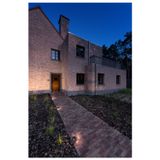
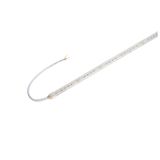

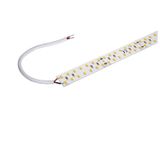
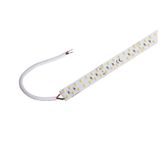

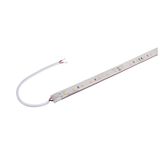

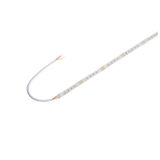

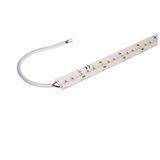

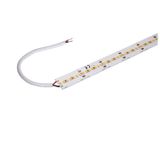

slv led strips and modules Range, application, and performance
Retail coves, hospitality lines, galleries, and task benches all benefit from linear sources that hold color and run cool. SLV’s 24/48 V constant-voltage strips and constant-current boards cover ~300–4 000 lm/m nodes, 80/90/95 CRI options, CCT 2 700–6 500 K (with tunable-white on selected sets), and efficacies up to ~170 lm/W. Binning stays tight (≤3 SDCM), drivers meet PF ≥0.90 with THD typically ≤10–15 %, and pro lines hit PstLM ≤1.0 / SVM ≤0.4 so cameras behave. Ambient −20…+45 °C by family; IP20 for interiors, IP65/67 encapsulated variants for damp soffits and breezeways.
slv led profiles Thermal design, optics, and finishes
Extrusions arrive shallow, deep, asymmetric, and wall-washer, with clear, opal, or micro-prismatic covers. Section mass is matched to board watt density, keeping Tc below the TM-21 projection knee; L80 at 50–100 kh is realistic when airflow isn’t choked. End caps and joiners are gasketed where IP is required; feed-through glands don’t deform the slot. Finishes include anodized natural, black, and project colors—run one finish per sightline to avoid visible shifts.
slv linear lighting modules Boards, optics, and controls
Rigid 280/560/1120 mm boards drop into trunking and troffers. Optic sets include Lambertian, batwing, aisle, and double-asymmetric; high-CRI (R9>50) variants hold reds in retail and museums. Control is via DALI-2 DT6/DT8 or 1–10 V; report minimum stable level by driver, not just protocol. For very long CV runs, step to 48 V or feed both ends—voltage drop looks like “color drift” in punch lists.
slv led mounting systems Mechanics that pass inspection
Wire, rod, and clip carriers carry stated SWL with ≥5:1 safety factors; C-rail clips and trunking shoes keep rows straight. Through-wiring harnesses ship pre-terminated (0.5…2.5 mm² windows) so loop-through on 10 A lighting circuits is quick. Leave 10–15 mm air around convection-cooled drivers; crowded coves cook Tc and kill lifetime claims.
Technical references and compliance
Modules per EN 62031 with LM-80/TM-21 maintenance data; assembled lines per EN 60598. Control gear to IEC/EN 61347-2-13. EMC EN 55015, immunity EN 61547; harmonics EN 61000-3-2 Class C (>25 W). IP to EN 60529 (IP20/44/65/67 by kit). Impact up to IK08 on exposed covers. Publish torque, strip length, and conductor windows on drawings—QA stops guessing at height.
Applications and wiring practice
Retail shelves: narrow optics for punch, opal for price rails; set feed spacing so CCT uniformity holds end-to-end. Museums: high CRI, low ripple, and DT8 tunable-white for conservation cues. Logistics aisles: asymmetric optics aligned with racking; presence + daylight trim per bay. Food prep: sealed joints, stainless fixings, and silicone gaskets. Where the schedule groups small parts under slv lighting accessories, include end-caps, joiners, glands, and jumpers on the same tag so installers finish in one pass. For metalwork-critical lines, specify slv aluminium profiles by section code and cover type to lock thermal headroom.
Selection criteria for B2B buyers
- Photometry: target lux and uniformity (Ē/Emin), then pick lumen/m and optic.
- Color: CRI/CTT, bin (≤3 SDCM), and Duv stability for multi-batch installs.
- Electrical: 24 vs 48 V, loop length, copper gauge, PF/THD, inrush per channel.
- Thermal: profile mass vs W/m; specify pad conductivity (W/m·K), not just thickness.
- Environment: IP/IK, chemicals, cleanability; stainless fasteners in hygiene zones.
- Controls: DT6/DT8 vs 1–10 V; publish min level and fade curves.
- Documentation: IES/LDT, Tc locations, torque tables, wiring diagrams, and EM flux where applicable.
Engineering and field notes
- Feed both ends or mid-inject long runs; keep drop <3 % to protect CCT.
- Test very low dim levels on site with the actual cameras.
- Keep SELV in plastic conduit and bond profile runs only where EMC policy requires it.
- Pre-cut lengths arrive cleaner than site saws and keep dust out of plenums.
- For tight radii or moving joinery, specify slv flexible led strips and strain-relieved jumpers; don’t force rigid boards to bend.
Procurement and logistics
Standardize two profile heights and one connector family per floor; spares become interchangeable. Order spare diffusers, gaskets, and end plates with the first drop—most late-night IP issues are missing seals, not LEDs. Label loops and segment IDs; maintenance lives or dies on neat marshalling.
Advantages of working with Bankoflamps
We map optics, lumen nodes, driver sets, profiles, feeds, and control protocol straight from your room data sheets and one-lines, then show live EU stock by warehouse before access windows are booked. Quotes typically return in about an hour with EAN/MPN, Tc limits, PF/THD, inrush, IP/IK, and cut-plan codes—so selections don’t drift mid-phase. Your portal provides lead-time visibility, shipment status, and downloadable price lists with validity dates; approved clients can use post-payment up to 30 days. We consolidate by line/zone to cut freight and on-site sorting, and your account manager cross-checks feed distances, DALI budgets, emergency zoning, gland policy, and mounting hardware against the drawings—so cartons arrive lift-ready and crews finish once.